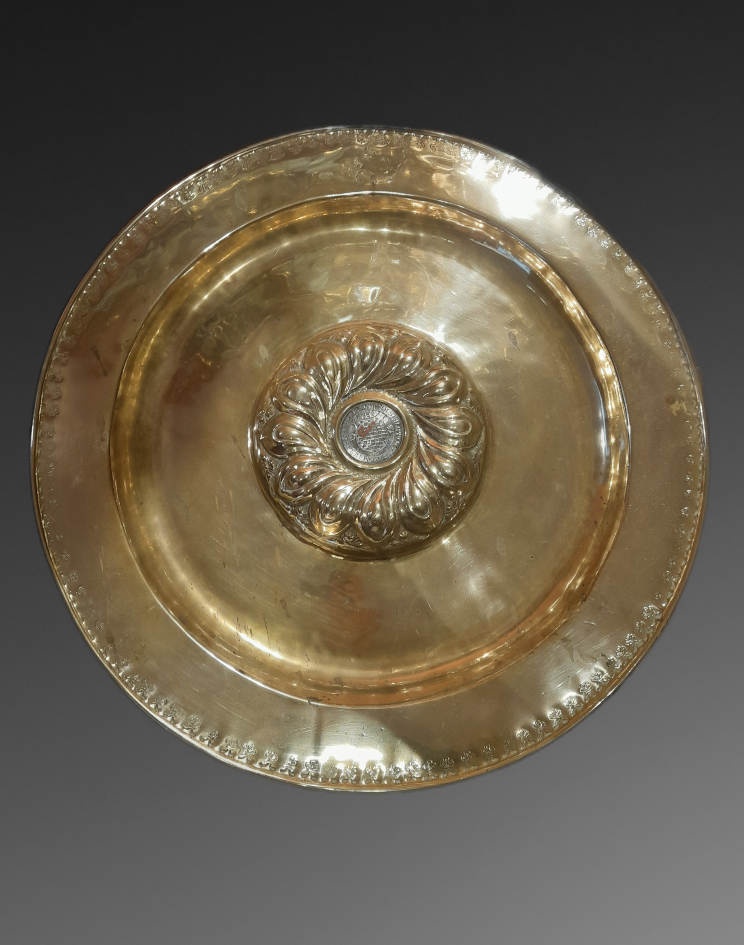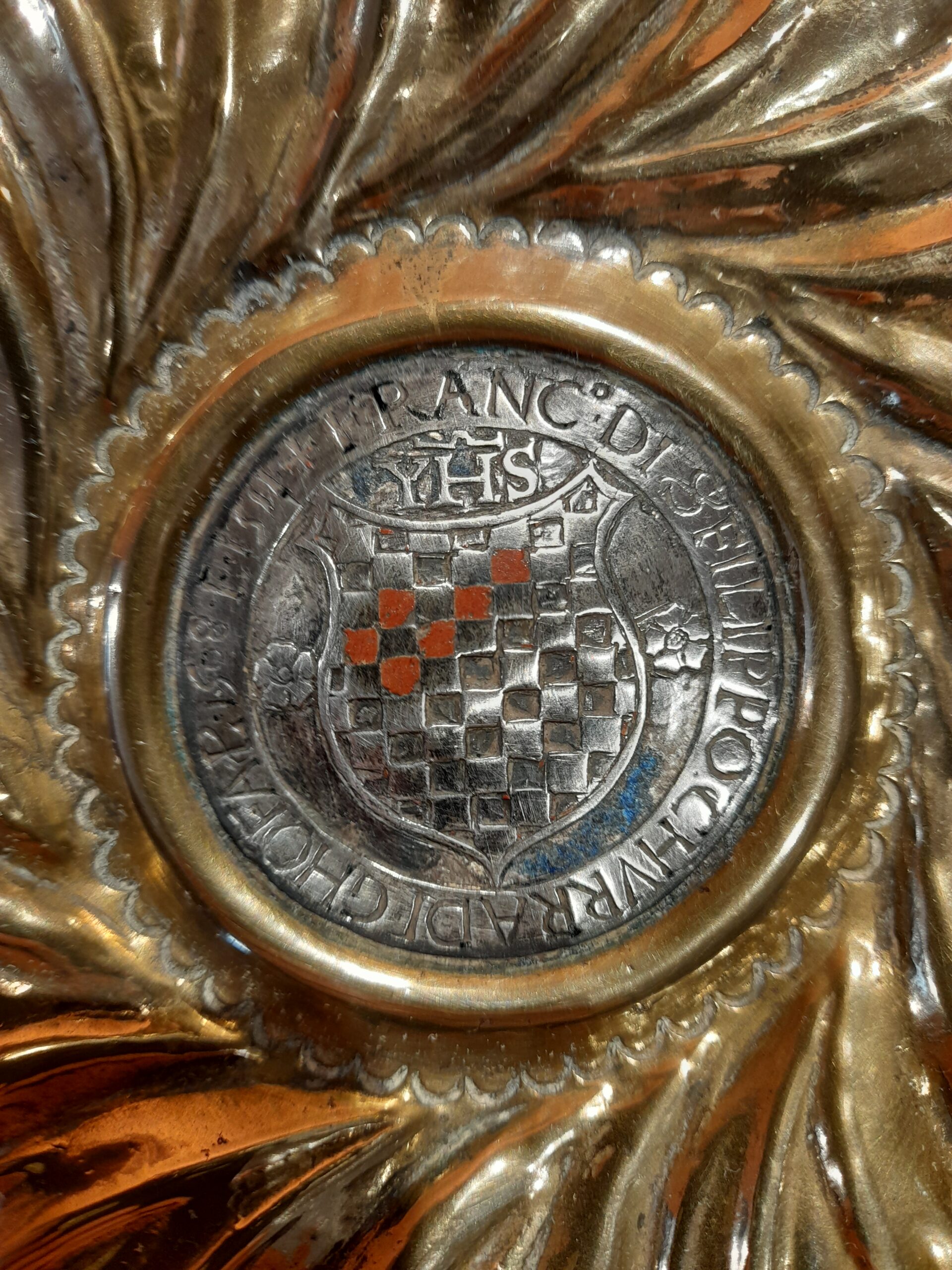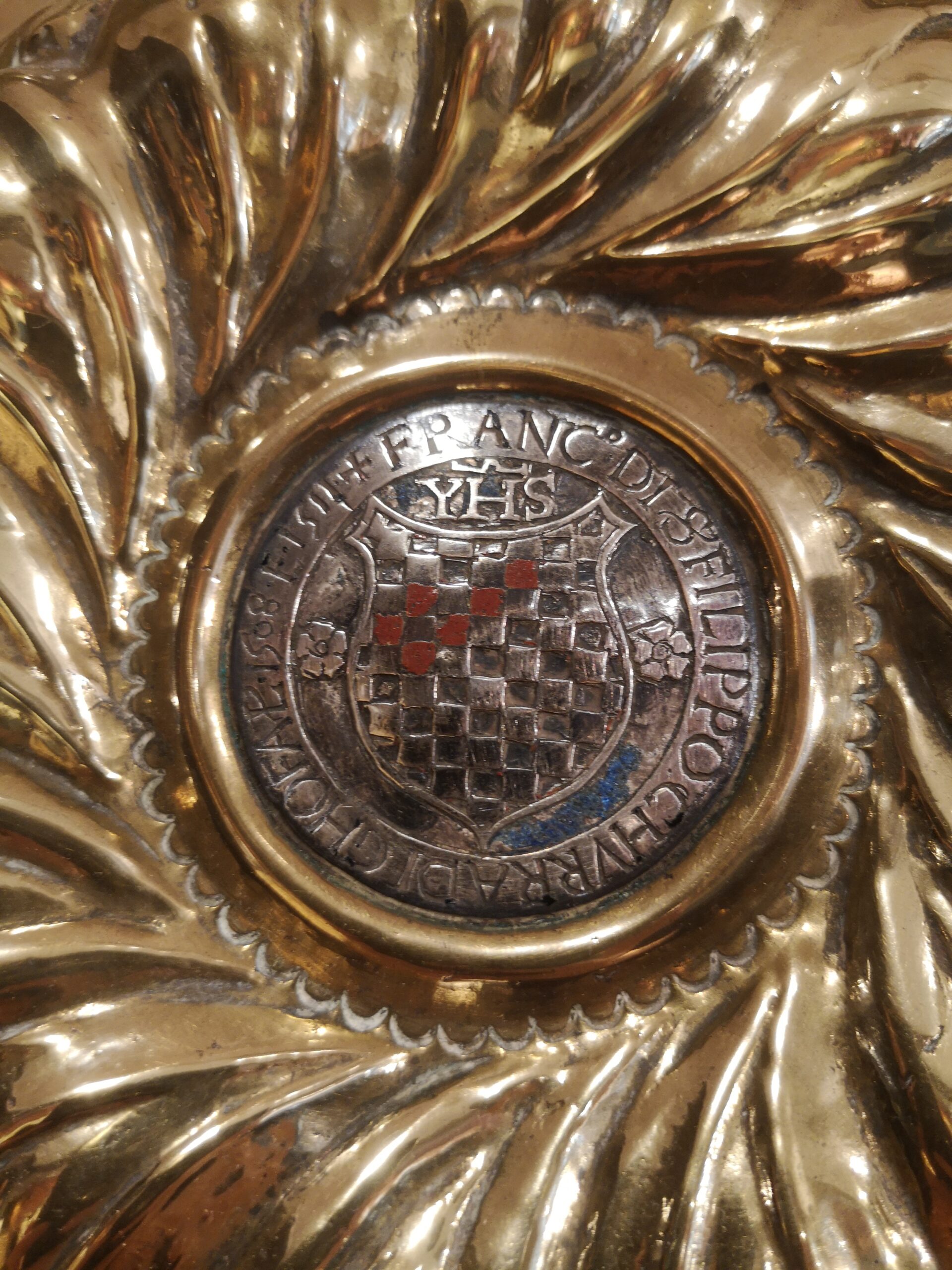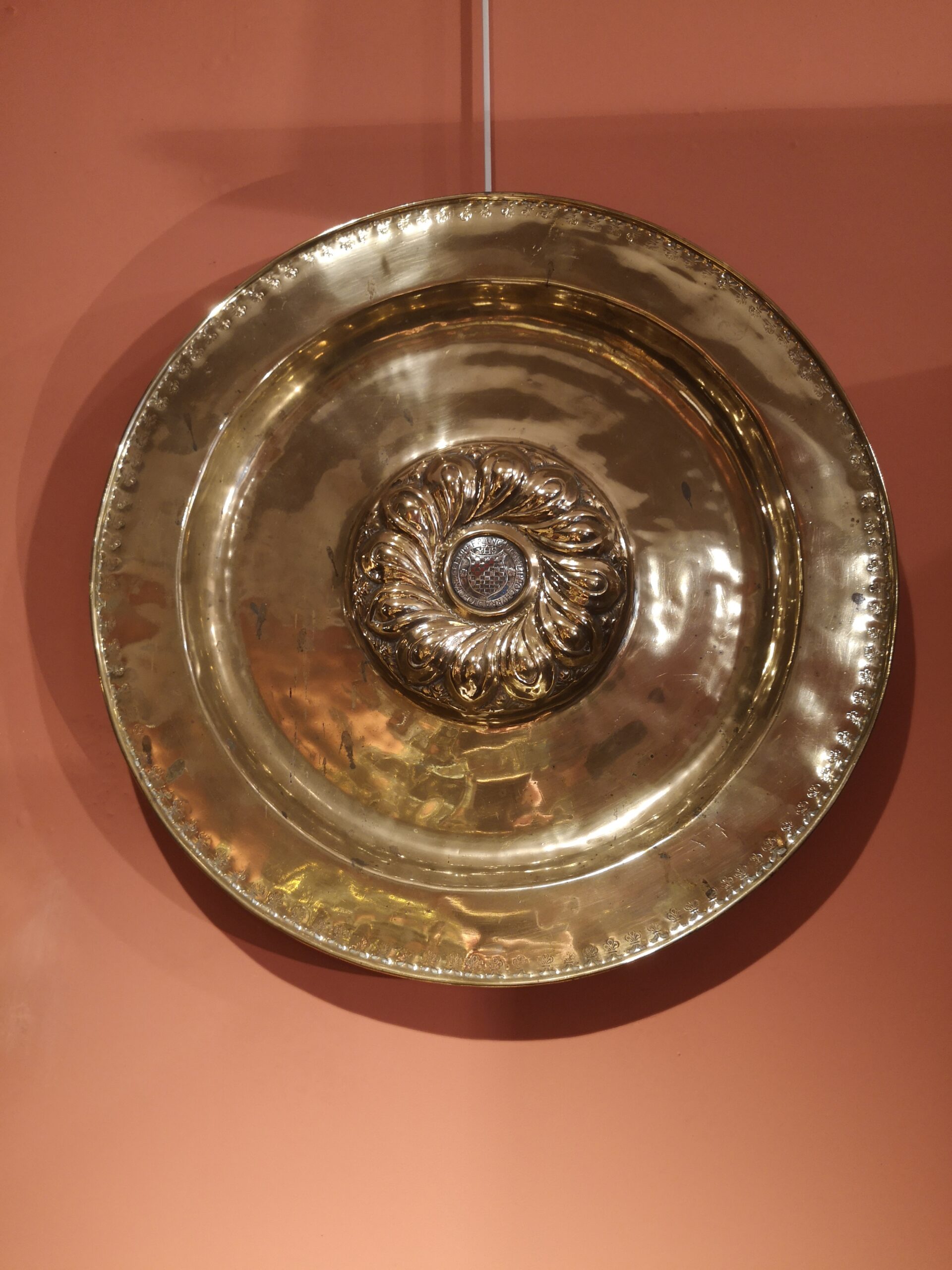Description
In the 15th century, Belgian and German workshops, mainly in Nuremberg, revived brassware by designing a singular type of dish: the offering dish with embossed decoration. Varying in size from 35 to 60 cm, they are mainly made of brass and more rarely of copper.
They were originally used to receive offerings from the faithful during Christian religious ceremonies.
Generally, these offering dishes consist of a central part, called the umbilicus, richly decorated by stamping. The umbilicus, in high relief, is often decorated with gadroons forming a rosette that opens into several petals.
This astonishing and extraordinary circular dish is composed of an embossed umbilicus encircled by twelve pointed gadroons forming a swirling rosette that ends in a serrated motif. The outer spaces are filled with foliage. The centre of the umbilicus is defined by a silver medallion on which is chiselled a coat of arms with a field alternating with a checkerboard. Remains of inlaid red enamel on a blue background persist.The crest is surmounted by a monogram of three Gothic letters “Y H S”, which is an abbreviation and transliteration of the Greek name of Jesus (IHS). This triliteral monogram, widely used, is one of the oldest Christian symbols that adorned religious places.From the 15th century onwards, the monogram was used by great families in their coats of arms to express their devotion to Christ. On either side of the crest, we find two pentagram flowers with five petals. An inscription in capital letters forms the edges of the medallion: “FRANC° DISFILIPPO. CHVRRADI. GHOFAL. 1508 E 1511✠”
The basin of the dish is bare, without any inscription or design. On the wing of the dish we find a series of fleurdelisé and ribboned motifs stamped with punches or a chisel. Finally, the wing has a rolled cord edge. The brass piece rests on an iron stiffener.




